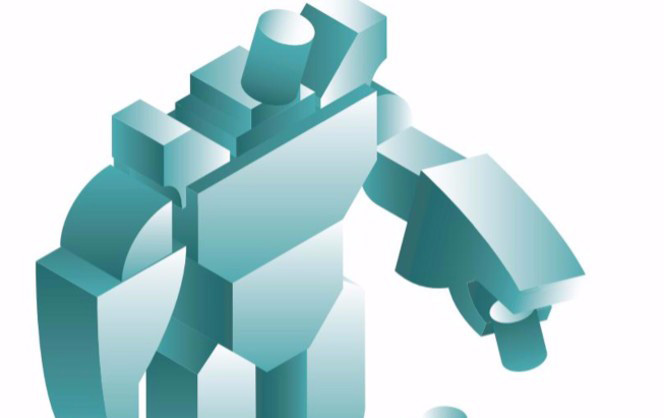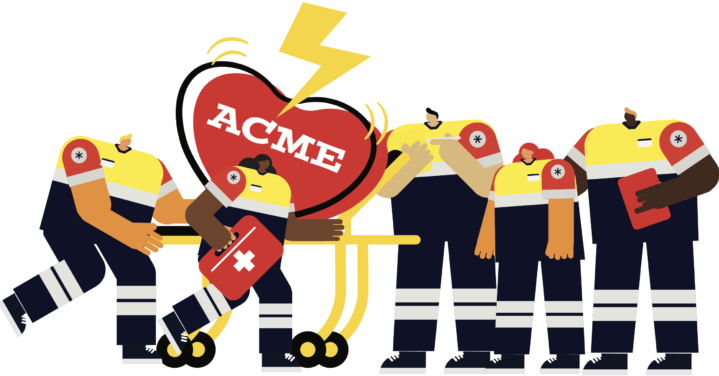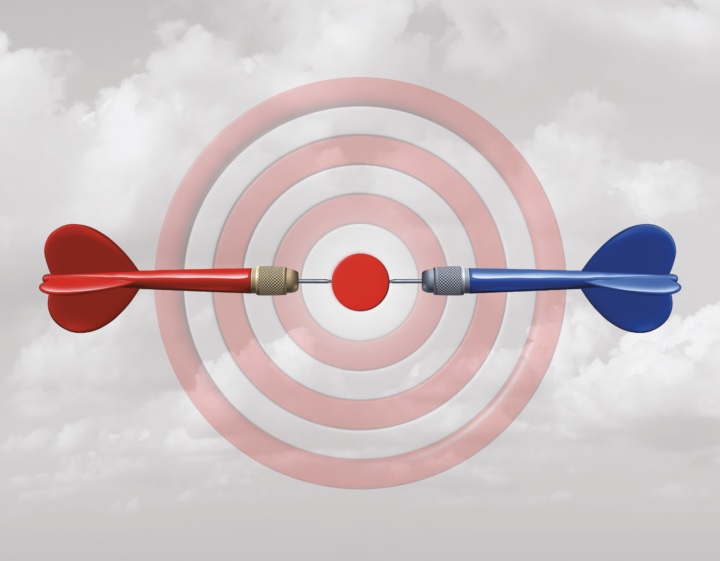Like the Transformers of the silver screen, the best industry disruptors can change and adapt at the blink of an eye. Here’s the ‘transformer’ strategies that innovative companies use to get ahead – and stay ahead.
More than any other term, ‘disruption’ captures the business zeitgeist of our time. New technologies can creep up on confident, unsuspecting incumbents and eventually steal away their best customers before they can even realize that their status as market leaders is gone for good. These new disruptor technologies generally start by targeting ‘low-end’ buyers with inferior products that don’t deliver the performance demanded by mainstream customers. Incumbents tend to overlook these products because their traditionally most reliable customers don’t want them.
But with ninja-like stealth, once-inferior technology improves and eventually challenges surprised incumbents on their most valuable turf. Nucor used this approach with its mini-mill technology to disrupt integrated steel producers like US Steel. Apple and IBM used ‘inferior’ microcomputers to disrupt the mini-computers sold by DEC and Data General. And Skype’s cheap – and typically free – phone service has gradually been moving upmarket as the quality of calls improves and advancing technology allows for videoconferencing and other higher-end business services.
This low-entry, high-growth model is classic disruption theory à la Clayton Christensen, author of The Innovator’s Dilemma. But the pattern Christensen describes isn’t the only type of innovative strategy that can transform industries such that incumbents can no longer do business as usual. Uber has transformed the taxi industry; Tesla is transforming the automotive industry; Amazon the retailing industry; Build-a-Bear the stuffed toy market; and Cirque de Soleil the entertainment industry. They are all using innovative strategies that differ from Christensen’s classic disruption theory. Yet what is similar is that they are forcing incumbents to change business-as-usual. This happens when innovators offer value that is attractive to incumbents’ customers, and is delivered through a business model that is difficult for incumbents to imitate. Here are five innovative strategies that upstarts, or incumbents, may use that can radically transform industries.
Transformer 1: Share
Coordinate and share assets
Uber and Airbnb have ushered in the sharing economy by building apps that help consumers coordinate and share private assets. In the case of Uber, individuals use their personal car as a taxi, receiving requests for rides and getting paid for driving. With Airbnb, homeowners rent out spare rooms to guests. And while Uber and Airbnb are among the most well-known sharing platforms, over 9,700 such companies with over $8.5 billion in funding now exist, according to sharing-economy directory Mesh. Companies have built apps for sharing everything from washing machines and office space, to boats, lawnmowers and cocktail dresses.
To truly transform industries, however, coordination and sharing platforms must target significant pockets of consumption, as Uber and AirBnB have done with transportation and lodging. The companies’ efforts have proven disruptive to incumbents. The San Francisco Cab Drivers Association (SFCDA), reported that one-third of the 8,500 or so taxi drivers in San Francisco — more than 2,800 — have ditched driving a registered cab in the last 12 months to drive for a private transportation startup like Uber or Lyft. Certify, the business expense tracking company, reported that Uber and Lyft accounted for nearly 50% of all ride-hailing business expenses in 2016, as taxis fell to 14% from 37% just two years earlier. And Airbnb, founded in 2008, now offers more rooms – more than a million – than any hotel chain in the world.
Several keys make the strategy to coordinate and share assets work.
First, sharing solutions seem to work best when asset value is high, but utilization of those assets is low, as is the case with cars and spare rooms. However, the high asset value must also be combined with a way to effectively manage risk. Existing insurance policies, such as car and home insurance, naturally cover drivers and homeowners even while sharing. But bigger challenges exist with assets that are relatively high value and uninsured, but that can be easily ruined by a non-owner – a designer cocktail dress, for example.
Second, companies that use this approach must build scale in the network itself – through the set of buyers and sellers who utilize the platform. To grow, these companies must overcome the classic two-sided market paradox: they won’t have buyers until they have sellers; and they won’t have sellers until they have buyers. That’s why Uber focuses so intently on driver recruitment as it expands to new markets. The company heavily subsidizes drivers while giving steep discounts to riders. This explains the over $1 billion loss the company incurred as it tried to expand to China. To be successful, companies must have a path to building network scale in local markets.
Third, the sharing economy is fuelled by the uniqueness of Millennial attitudes. Millennials value community, authenticity, frugality and genuine experiences. Companies that wish to transform industries using a coordinate and share assets (Casa) strategy will need to create brands and communities that appeal to this Millennial culture.
Transformer 2: Leapfrog
High-end innovations that move down market
High-end, or top-down, innovative strategies can be as revolutionary as a bottom-up disruptive innovation. But in stark contrast to the low-end variety, high-end innovations are leapfroggers, making them difficult to imitate. They outperform existing products on critical attributes on their debut; they sell for a premium price rather than a discount; and they target incumbents’ most profitable customers, going after the least price-sensitive buyers before spreading to the mainstream. History provides sharp examples: iPod outplayed the Sony Walkman; Starbucks’ high-end coffee drinks and atmosphere drowned out local coffee shops; Dyson’s upmarket vacuum cleaners sucked up a solid market share; Garmin’s GPS golf watches outdrove most rangefinders. The incumbents didn’t react fast enough, and the high-end disruptors took over their market.
Tesla has built its strategy around this idea. According to its chief executive, Elon Musk, Tesla’s strategy from the beginning has been to sell highly desirable battery-electric vehicles in the high-end niche (like the Model S and Model X), and then move downmarket producing more affordable cars like the Model 3. The key to Tesla’s success with this top-down approach is to create rapid improvements in technology, combined with increases in scale that steadily and significantly lower the cost per unit of performance. Recent analysis we’ve done shows that Tesla is lowering its costs per car produced by 20% with every doubling of volume. If Tesla can continue to bring down the cost of electric cars at a faster rate than combustion engines improve, then Tesla’s chance of success shoots up. But Tesla isn’t satisfied with just being a high-end innovator, it also wants to use a Casa strategy like Uber. Tesla is a leader in self-driving vehicles, but its ambitions go well beyond just having your car autopilot you to your destination.
“When true self-driving is approved by regulators, it will mean that you will be able to summon your Tesla from pretty much anywhere,” says Musk. “Once it picks you up, you will be able to sleep, read or do anything else en route to your destination.” But beyond that, Tesla is planning to copy Uber’s strategy and create a ‘shared fleet’ and a mobile app so that you can add your car to the Tesla shared fleet just by tapping a button on the Tesla phone app and have it generate income for you while you’re at work or on holiday. Think about it: your car could become an income-generating asset. This could dramatically lower the true cost of ownership since most cars are only in use by their owner for 5-10% of the day. And by pulling the driver out of the car, it is less expensive than Uber.
Transformer 3: Eliminate
Reconfigure the value chain to eliminate activities
Another type of innovative strategy is based on reconfiguring the value chain to eliminate activities or steps. The most typical pattern is to eliminate a step in the path from production to customer, such as eliminating a store, which also eliminates the need for salespeople and inventory. This allows the firm launching the game-changing strategy to offer lower prices for similar products and services. This is the approach that Netflix used to gain a cost advantage against Blockbuster. Amazon used this same approach – selling books over the internet – to offer books at lower cost than Barnes & Noble.
The approach of eliminating stores and selling products over the internet has worked well for products like books and movies – items that are standardized and predictable. But can this work for a product that people like to try out before buying? What about a mattress? The company 1-800-Mattress has been quite successful selling mattresses online, as well as over the phone. Since the company sells mattresses that are similar to models sold in stores, customers can try one out to see which product they prefer. The company’s strategy is to sell mattresses for 20-30% lower than the competition and deliver it to your home. And if the customer isn’t satisfied, they can exchange it for another mattress, satisfaction guaranteed.
Southwest Airlines has used a similar strategy of eliminating steps in the value chain to offer low airfares relative to other airlines. By eliminating meals, seat reservations, and luggage transfers, Southwest has been able to lower total costs and offer less expensive airline tickets to its customers.
Transformer 4: Customize
Reconfigure the value chain to allow for mass customization
Some firms, like Build-A-Bear Workshop, Timbuk2 and NikeID have launched innovative strategies based on a concept that is known as mass customization. Mass customization is an oxymoron, like ‘jumbo shrimp’ or ‘act naturally’. Until recently, most products in business were either mass produced or customized, but not both. However, new technologies and processes have allowed for the mass production of individually customized goods or services. Take Build-A-Bear Workshop, for example. Customers ‘build’ their own teddy bear or other stuffed animal by choosing from a large variety of body styles after which the animal is stuffed at the store to the customer’s liking. The customer can also add a heart or soundbox during stuffing, enabling the animal to ‘talk’ or play music. The customer can then dress their furry friend in an outfit of their choice from a soccer uniform, or witch costume, to a sequin shirt and jeans, and they can even add shoes. The components of the teddy bear are mass produced but put together in a customized way by each individual customer. But mass customization isn’t just for children. Online retailer Timbuk2 uses a similar approach, allowing customers to choose from a set of modules to design their own bags. NikeID used the same approach with shoes. Build-A-Bear, Timbuk2 and NikeID find that many customers enjoy the experience of creating their own unique product.
Mass customization works best in markets where customers have a variety of different needs and many want a product that is personalized to their particular needs. It also works best when the product can be broken into modules that offer different features or performance. This requires that the product be designed as separate modules that can be mass produced but that can be quickly and easily linked together to create a functioning product.
Transformer 5: Originate
Blue Ocean Strategy – creating new markets by targeting non-consumers
INSEAD professors Chan Kim and Renee Mauborgne identify another type of innovative strategy that they call ‘Blue Ocean Strategy’. They argue that a company can succeed by creating new demand in an uncontested market space. Where sharks competing for the same scarce food create a ‘red ocean’ of blood due to intense rivalry, ‘blue ocean success’ relies on swimming into empty water. In other words, you originate an entirely new market by offering value that is very different from anything else currently being offered. For example, when Cirque de Soleil opened its first show, it was clear that it would be nothing like a Ringling Brothers circus. A Cirque de Soleil show combines elements of a traditional circus, acrobatic troupe, street performers, and a Broadway show to offer a unique entertainment experience. Cirque’s shows are so original that there is no direct competition. The tagline for one of the first Cirque productions was revealing: “We reinvent the circus.” Moreover, it attracted a new group of customers who were willing to pay several times the price of a conventional circus ticket for a unique entertainment experience.
Incumbent paranoia
The five types of innovative strategies we’ve identified can make incumbents more paranoid than ever. Beyond classical low-end disruption, there are multiple ways that new entrants, or even incumbents, can launch innovative strategies that transform industries.
The key is to be sure that the business model innovation is sufficiently different that it creates a barrier to incumbent response, so that imitation is difficult or impossible. Coordinating and sharing assets, moving down market with superior technology, reconfiguring the value chain, mass customization, or targeting non-consumption are all innovative approaches that create such barriers. When effectively employed, these approaches ensure that incumbents can no longer do business as usual.
Jeff Dyer is Horace Beesley professor of strategy at Brigham Young University and co-author of The Innovator’s DNA and The Innovator’s Method. David Bryce is professor of strategy at Brigham Young University. An adapted version of this article appeared on the Dialogue Review website.



